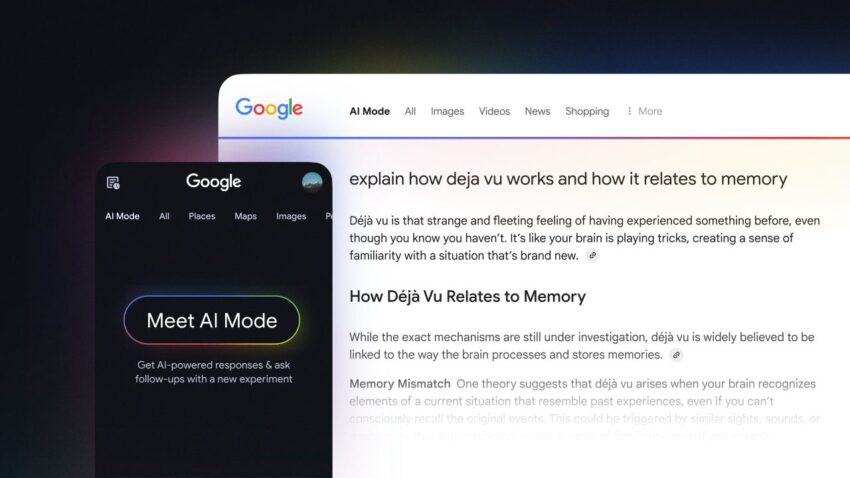
ai mode in google search is turning Google has announced a significant update to its AI Mode in Search, enhancing the way users can turn visual ideas into actionable shopping lists.
ai mode in google search is turning
Transforming Search with AI Mode
Historically, searching for items on Google, such as “cool chair,” often resulted in a plethora of unrelated results, requiring users to sift through numerous filters and options to find what they were looking for. This traditional search experience can be frustrating and time-consuming. However, Google is now revolutionizing the way users interact with its search engine through an update to its AI Mode, which aims to make searches more visual, conversational, and flexible.
The New Visual Approach
One of the most notable aspects of the updated AI Mode is its emphasis on visual content. Users can now expect a more image-centric search experience, allowing them to see products and ideas in a more engaging format. This shift aligns with the growing trend of visual communication in digital spaces, where images often convey messages more effectively than text alone.
With the new AI Mode, users can input visual prompts, such as uploading a photo or using a screenshot, to initiate a search. This feature is particularly useful for those who may have seen a product in a magazine, on social media, or in a friend’s home but do not know how to describe it in words. By leveraging advanced image recognition technology, Google can analyze the visual input and provide relevant search results that closely match the user’s request.
Conversational Search Experience
In addition to enhancing visual searches, Google’s AI Mode introduces a more conversational search experience. Users can engage with the search engine in a dialogue-like manner, asking follow-up questions and refining their queries based on the initial results. This conversational approach mimics human interaction, making the search process feel more intuitive and user-friendly.
For instance, after searching for “cool chair,” a user might follow up with questions like “What colors does it come in?” or “Where can I buy it?” The AI is designed to understand context and provide relevant answers, streamlining the user’s journey from search to purchase. This feature not only enhances user engagement but also increases the likelihood of users finding exactly what they need without the frustration of navigating through irrelevant results.
Shopping-Friendly Features
Another significant enhancement in Google’s AI Mode is its focus on shopping. The updated search experience is tailored to help users transition from inspiration to purchase seamlessly. By integrating shopping features directly into the search results, Google aims to create a more cohesive experience for users looking to buy products online.
Creating a Shopping List
One of the standout features of the new AI Mode is the ability to compile a shopping list based on visual searches. When users find products they like, they can easily add them to a virtual shopping list. This functionality is particularly beneficial for users who may be planning for events, redecorating their homes, or simply browsing for new items.
For example, if a user searches for “modern living room decor” and finds several appealing items, they can select each product and add it to their shopping list with just a few clicks. This feature not only simplifies the shopping process but also allows users to keep track of their desired items in one convenient location.
Enhanced Product Discovery
The AI Mode also enhances product discovery by providing personalized recommendations based on users’ search history and preferences. By analyzing previous searches and interactions, Google can suggest products that align with the user’s style and needs. This tailored approach not only improves the user experience but also increases the chances of conversion for retailers.
For instance, if a user frequently searches for eco-friendly products, Google’s AI can prioritize similar items in their search results. This level of personalization is becoming increasingly important in the competitive e-commerce landscape, where consumers are inundated with choices and may struggle to find products that resonate with them.
Implications for Retailers
The introduction of AI Mode in Google Search has significant implications for retailers and e-commerce businesses. As Google enhances its search capabilities, retailers must adapt their online strategies to ensure they remain visible and competitive in this evolving landscape.
Optimizing for Visual Search
With the shift towards visual searches, retailers will need to optimize their product images and descriptions to align with Google’s AI algorithms. High-quality images, detailed product descriptions, and relevant tags will become increasingly important for ensuring that products appear in visual search results.
Additionally, retailers should consider investing in image optimization techniques, such as using alt text and structured data, to improve their visibility in Google’s search results. By doing so, they can enhance their chances of being discovered by potential customers who are using the new visual search features.
Leveraging Conversational AI
Retailers can also benefit from the conversational aspect of Google’s AI Mode by creating content that addresses common customer queries and concerns. By anticipating the questions that users may ask during their search journey, retailers can develop informative content that enhances the user experience and builds trust with potential customers.
For example, retailers can create FAQ sections or chatbots that provide instant answers to common questions about their products. This proactive approach not only improves customer satisfaction but also increases the likelihood of conversions as users feel more informed and confident in their purchasing decisions.
Adapting to Personalized Recommendations
As Google’s AI Mode incorporates personalized recommendations, retailers must focus on understanding their target audience and tailoring their offerings accordingly. By analyzing customer data and preferences, retailers can create targeted marketing campaigns that resonate with their audience and drive engagement.
Moreover, retailers should consider collaborating with Google to enhance their visibility in search results. By participating in Google’s shopping programs and utilizing advertising options, retailers can increase their chances of being featured in personalized recommendations, ultimately driving more traffic to their online stores.
Stakeholder Reactions
The announcement of AI Mode in Google Search has elicited a range of reactions from stakeholders across the retail and technology sectors. Many retailers view the update as a positive development that can enhance their visibility and sales potential. However, some express concerns about the increased competition and the need to adapt quickly to the changing landscape.
Retailers’ Perspectives
Retailers are generally optimistic about the new features, recognizing the potential for increased customer engagement and sales. Many see the visual and conversational elements as opportunities to connect with consumers in more meaningful ways. However, they also acknowledge the challenges of keeping up with the rapid pace of technological advancements and the need for continuous optimization of their online presence.
Consumer Reactions
Consumers have responded positively to the idea of a more visual and conversational search experience. Many appreciate the convenience of being able to find products based on images and engage in a dialogue with the search engine. This new approach aligns with the preferences of modern consumers, who increasingly favor visual content and personalized experiences.
Industry Experts’ Insights
Industry experts have weighed in on the implications of Google’s AI Mode, highlighting the potential for significant shifts in the e-commerce landscape. Some experts caution that while the new features may benefit consumers and retailers, they also raise questions about data privacy and the ethical use of AI in marketing.
As Google continues to refine its AI capabilities, stakeholders will need to navigate the complexities of this evolving landscape, balancing innovation with ethical considerations.
Conclusion
Google’s update to AI Mode in Search represents a significant advancement in how users can interact with the platform. By making searches more visual, conversational, and shopping-friendly, Google is not only enhancing the user experience but also reshaping the e-commerce landscape. Retailers must adapt to these changes by optimizing their online presence and leveraging the new features to connect with consumers effectively. As the digital landscape continues to evolve, the implications of these advancements will be felt across the industry, prompting ongoing discussions about the future of search and shopping.
Source: Original report
Was this helpful?
Last Modified: October 1, 2025 at 10:37 am
1 views















